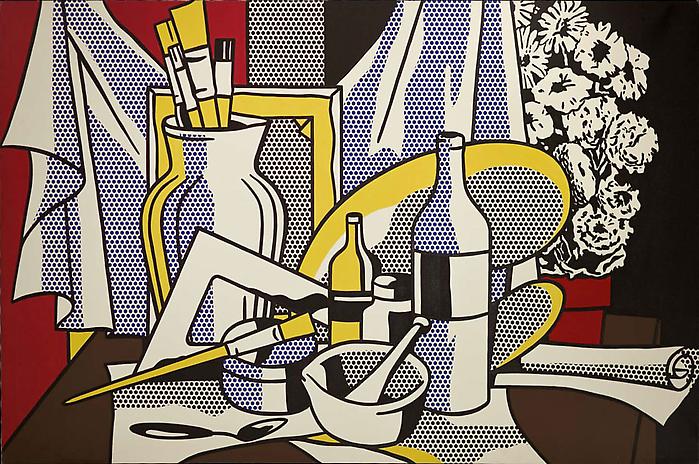Wow, this was a really fun project to create with the kindergarteners! The little ones had a blast so therefore this project will probably be a curriculum staple. We took two classes to complete this mixed media artwork. The kinders practiced drawing, painting, stamping, printmaking, tracing, cutting, and gluing...all in one work of art!
 | |
| A proud kindergarten artist's finished mixed media collage. |
On the first day I had set up 5 different media stations. I introduced the lesson to the kids by talking with them about circles and how we were going to make circles with all different types of art supplies. I gave the kids a tour of each station demonstrating how to use the art supplies. By time I had finished they couldn't wait to try them out. We rotated through each station about every 5-7 minutes.
Here are the 5 stations in action shown in the photographs below.
 |
| Circle stencil station. Kinders traced and colored a variety of circle sizes on their paper. |
 |
| A favorite. The printmaking station. Kinders used brayers and bubble wrap to print circle dots with red and yellow paint. |
 |
| Stamping station. Kinders stamped plastic cups, cut straws, and recycled plastic spools to create circles. I love to see those messy art hands! |
 |
| Cut and Glue station. Kinders traced a circle stencil, cut and glued it to their work. They were also given circle stickers to add to their designs. |
 |
| Painting station. Kinders painted circles and dots in various sizes with black tempera paint. |
|
|
|
On the 2nd day in class, I read the book
"Eight Days Gone", by Linda McReynolds. It is beautifully illustrated book about the US astronauts trip to the moon. The kindergarteners really enjoyed talking with me about space, the moon, and spaceships. They were fascinated with spacesuits and how they give the astronauts oxygen while in space.
After we ended our discussion I guided the students in drawing a spaceship using lines they learned back in September. We used the curve, horizontal, and diagonal lines. They added details with crayons and cut it out. Next they brought their spaceships to a separate table where they chose a couple colors to paint their ships with watercolor.
Once they finished adding all of the color, they glued their spaceships into position on their circle pictures created on the 1st day.
Here are some of their results in the photographs below.
The kids were so proud of their work which made me feel great as a teacher. I will try to create more projects like this one. I loved how we incorporated so many supplies and techniques and still allowed for creative expression. We learned about art media, space, and travel all in one project!

























